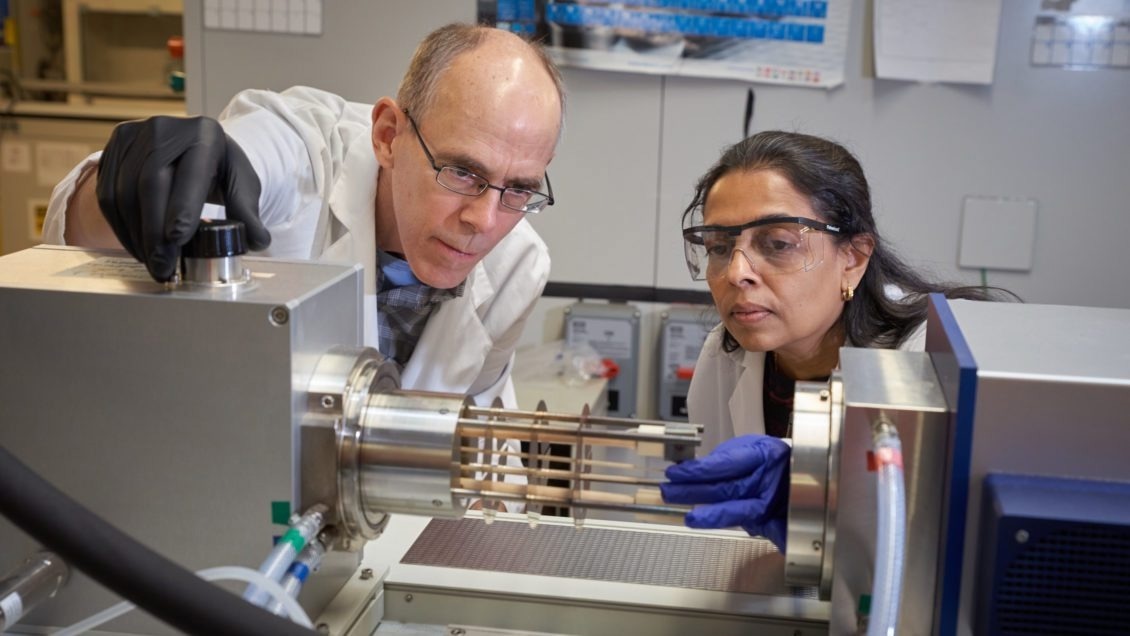A group of scientists from the Clemson Department of Physics and Astronomy and the Clemson Nanomaterials Institute (CNI) collaborated with one of the world’s most prominent thermoelectric materials researchers to develop a novel, fool-proof approach for evaluating thermoelectric materials.

Image Credit: Clemson University
Sriparna Bhattacharya, Assistant Professor of Physics and Astronomy, Engineer Herbert Behlow, and CNI Founding Director Apparao Rao partnered with world-renowned researcher H. J. Goldsmid, professor emeritus at the University of New South Wales (UNSW) in Sydney, Australia, to develop a one-stop method for assessing the effectiveness of thermoelectric materials.
“Father of Thermoelectrics”
Many people regard Goldsmid as the “father of thermoelectrics” because of his groundbreaking work with thermoelectric materials. Bhattacharya first met Goldsmid on LinkedIn, where she informed him that during her graduate studies at Clemson University, she had proven one of his theoretical predictions.
Bhattacharya later shared a paper she authored with Rao after joining his study group. Goldsmid told her he had a new approach to studying thermoelectrics in mind and communicated his one-page theory with her. He was 89 years old at the time and eagerly began working with the CNI researchers because he considered Bhattacharya to be a member of his own research “family.”
To produce electricity, thermoelectric materials use a temperature gradient (DT). They can be used to generate power by transforming heat into electricity (Seebeck method) or for refrigeration by converting electricity to cooling (Peltier method). Thermoelectric materials are employed in a variety of applications ranging from NASA space missions to vehicle seat warmers and coolers.
The efficacy of thermoelectric materials is measured using a figure-of-merit, or zT, which takes into account the temperature, electrical conductivity, and thermal conductivity of the material. The standard method of obtaining zT necessitates two measurements using distinct sets of equipment, which might lead to investigators reporting inaccurate results.
In other words, when switching from one instrument to another, researchers may inadvertently detect electrical conductivity (charge flow) and thermal conductivity (heat flow) along different directions in their sample.
Not Used Before
Peltier cooling had not previously been employed for analyzing zT due to a high DT, or the greatest attainable temperature differential between the cold junction and ambient.
We used thermocouples containing a metal and a semiconductor junction to reduce the DT to a much narrower range so that the temperature dependent zT may be determined with a higher resolution. The idea to use a metal and a semiconductor to reduce DT was hidden in plain sight until Professor Goldsmid recognized this was the case and proposed this new method for measuring zT.
Herbert Behlow, Engineer, Clemson University
“The experimental setup we developed at CNI (with the help of the Department of Physics and Astronomy Instrument Shop) to test Professor Goldsmid’s theory ensures that the charge flow and the heat flow are measured in the same direction in the sample. Therefore, by design, our method provides accurate zT,” adds Rao.
Isabel Rancu, a high school student at the South Carolina Governor’s School for Science and Mathematics, also participated in the research. Rancu, who collaborated with the team through Clemson’s Summer Program for Research Interns, independently verified Behlow’s model calculations.
Pooja Puneet, a senior lecturer in the Department of Physics and Astronomy, synthesized the bismuth telluride sample utilized in the study as part of her doctoral study.
Journal Reference
Bhattacharya, S., et al. (2022) Thermoelectric figure-of-merit from Peltier cooling. Journal of Applied Physics. doi.org/10.1063/5.0116327.